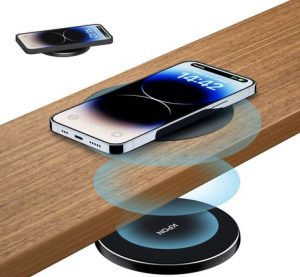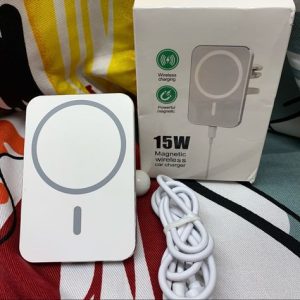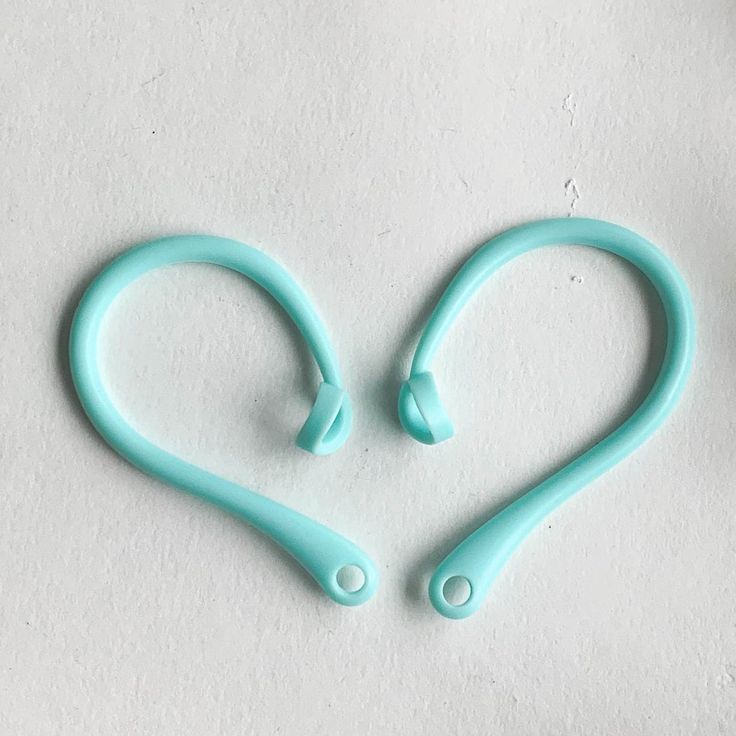Wireless chargers are a convenient way to juice up your phone, but sometimes, they can be finicky. If your wireless charger isn’t working as expected, don’t worry! This troubleshooting guide will help you ientify the culprit and get your phone charging again.
Basic Checks
Before diving into more complex solutions, let’s start with some basic checks:
Is your phone compatible with wireless charging?
Not all phones support wireless charging. Check your phone’s manual or manufacturer’s website to confirm.
Is your wireless charger plugged in?
This seems obvious, but it’s easy to overlook. Make sure the charger is securely plugged into a working outlet.
Is the power cable damaged?
Inspect the cable for any fraying or breaks. Try using a different cable to see if that resolves the issue.
Placement and Alignment
Wireless chargers rely on a magnetic field to transfer energy to your phone. Therefore, placement and alignment are crucial.
- Center your phone on the charging pad. Most wireless chargers have a sweet spot where the charging coil aligns perfectly with the coil in your phone. Consult your charger’s manual for guidance.
- Remove your phone case. Some bulky cases, especially those with metal components, can interfere with charging. Try charging your phone without the case to see if that makes a difference.

Addressing Foreign Objects
Even small objects can disrupt the charging process:
- Clean the charging pad. Dust, dirt, or debris on the charging pad can obstruct the connection. Wipe the surface with a clean, dry cloth.
- Check for objects between your phone and the charger. Make sure there are no coins, keys, or other metal objects between your phone and the charging pad.
Power Supply and Software
Sometimes, the issue lies with the power source or your phone’s software.
- Try a different power outlet. If the outlet you’re using is faulty, your charger won’t receive the necessary power. Plug the charger into a different outlet and see if that helps.
- Restart your phone. A simple restart can often resolve software glitches that might be preventing your phone from charging wirelessly.
More Advanced Troubleshooting
If you’ve tried all the basic steps and your wireless charger is still not working, there could be a deeper issue:
- Check for charger damage. Look for any visible signs of damage on the charging pad itself. If it appears damaged, discontinue use and consult the manufacturer.
- Outdated charger firmware. Some wireless chargers have firmware that can be updated. Check the manufacturer’s website for any available updates.
- Consult your phone’s user manual. Your phone’s manual might have specific instructions for wireless charging or troubleshooting tips.

When to Contact Support
If you’ve exhausted all the troubleshooting steps and your wireless charger remains unresponsive, it’s time to contact the manufacturer’s support for further assistance.
By following these steps, you should be able to identify the reason why your wireless charger isn’t working and get it back up and running in no time.
Understanding Wireless Charging Technology
Before we delve into more troubleshooting methods, let’s gain a basic understanding of how wireless charging works.
Wireless chargers use a technology called inductive charging. When you place your phone on a wireless charging pad, a coil inside the pad generates a magnetic field. This magnetic field transfers energy to another coil inside your phone, which converts it into electricity to charge the battery.
Knowing this, we can see how several factors can influence the charging process:
- Alignment: The coils in the charger and your phone need to be lined up correctly to facilitate efficient energy transfer.
- Distance: The charging pad and your phone need to be close enough for the magnetic field to be strong enough.
- Interference: Certain materials or objects can disrupt the magnetic field, hindering the flow of energy.
By keeping these principles in mind, you can approach the troubleshooting steps with a better understanding of why your wireless charger might not be working.

Diving Deeper into Troubleshooting
We’ve covered some essential checks to get your wireless charger functioning again. If those didn’t solve the issue, let’s explore some further possibilities:
Environmental Factors:
- Temperature extremes: Wireless chargers can be less effective in very hot or cold environments. Ideally, use your charger in a room with moderate temperatures.
- Metal surfaces: Placing the charger on a metal surface can disrupt the magnetic field. Try using the charger on a different surface, like wood or plastic.
Phone Case Issues:
- Thickness: Extra-thick phone cases, especially those with built-in kickstands or batteries, might create too much distance between the phone and the charging pad. Try using a thinner case while charging wirelessly.
- Material: Certain materials used in phone cases, like metal plates or magnets, can interfere with wireless charging. If your case has one of these features, consider removing it for charging.

Wireless Charger Specifications:
- Power output: Wireless chargers come in different wattages. Higher wattage chargers deliver power faster. If your charger has a low wattage output, it might take longer to charge your phone or struggle to charge it at all. Check your charger’s specifications and ensure it meets your phone’s power requirements.
- Compatibility: While most modern smartphones support wireless charging, there are exceptions. Double-check if your specific phone model is compatible with wireless charging technology.
By systematically considering these factors, you’ll be well on your way to diagnosing the cause of your wireless charger’s woes.
Advanced Troubleshooting Tips
If you’ve gone through the basic checks and explored common causes, here are some additional steps to consider:
Check for Software Updates:
-
Phone Updates: Sometimes, outdated phone software can lead to compatibility issues with wireless charging. Make sure your phone is running the latest software update.
-
Charger Firmware Updates (if applicable): Certain wireless chargers allow firmware updates. Check the manufacturer’s website or app (if they have one) for any available updates for your charger.

Cleaning the Charging Port:
- Dust, debris, or lint can accumulate in your phone’s charging port, hindering the connection. Using a compressed air can (available at most electronics stores) can gently remove any debris. Be sure to follow the instructions on the compressed air can and avoid inserting the nozzle directly into the port.
Contacting Support:
- If you’ve exhausted all the troubleshooting steps and your wireless charger remains unresponsive, it’s time to contact the manufacturer’s support for further assistance. They may be able to provide additional troubleshooting guidance or determine if your charger requires service.
By following these steps, you should be able to identify the reason why your wireless charger isn’t working and get it functioning again.










